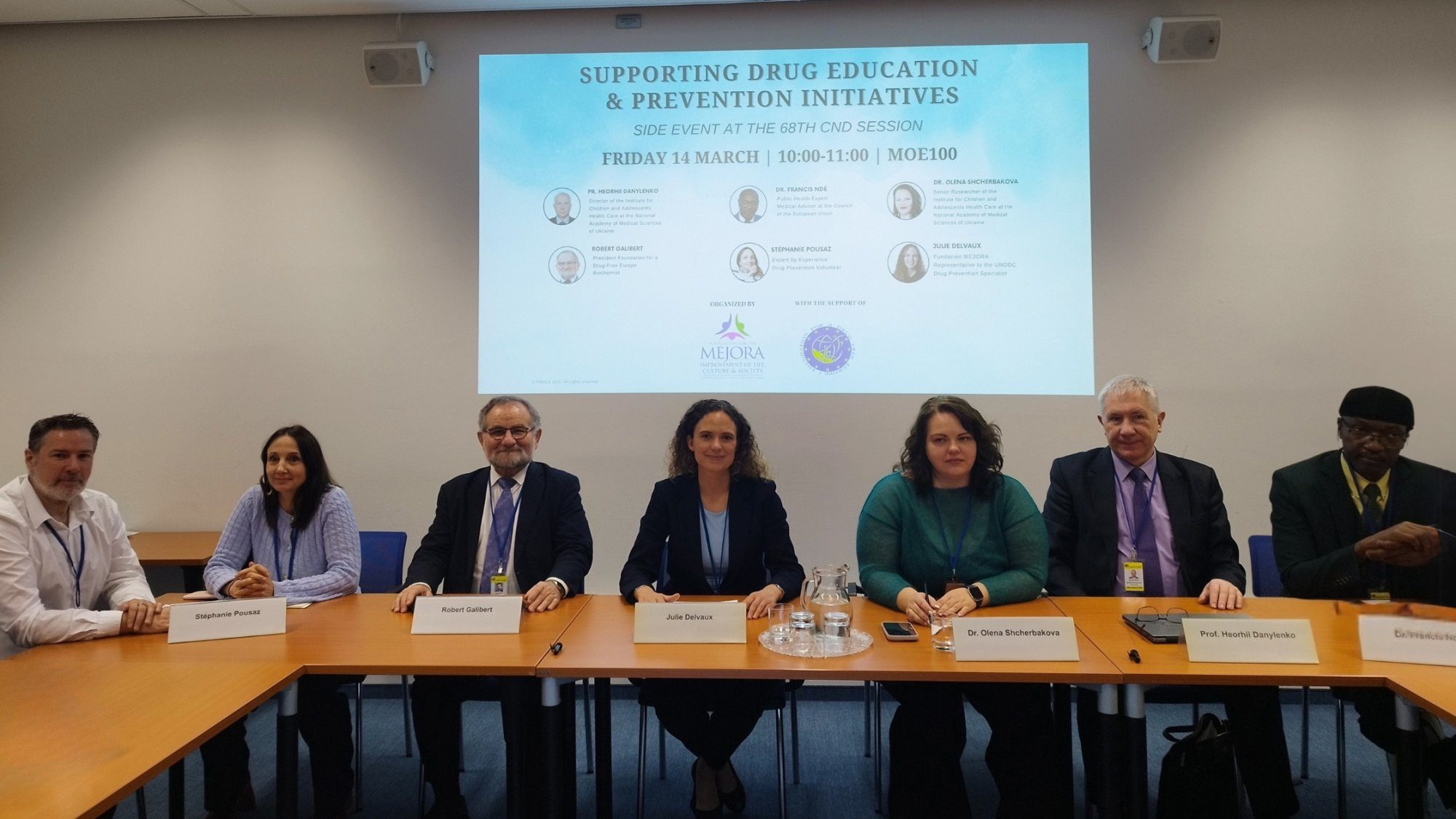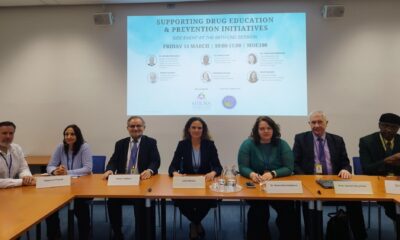Health & Society
The Benefits of Fasting – Exploring Time-Restricted Eating Patterns

Eating patterns are evolving, with many individuals turning to time-restricted eating as a means to enhance health and well-being. They find that this method of fasting offers numerous benefits, including improved metabolic health, weight management, and even mental clarity. Research indicates that such eating practices can lead to significant reductions in inflammation and lower risks of chronic diseases. As they explore these diverse fasting benefits, individuals are discovering how structured eating windows can transform their lifestyle and empower better health decisions.
Key Takeaways:
- Time-restricted eating can enhance metabolic health by improving insulin sensitivity and reducing blood sugar levels.
- Fasting patterns often lead to weight loss and fat loss while preserving lean muscle mass.
- Adopting time-restricted eating can potentially improve mental clarity and cognitive function.
- Fasting may promote autophagy, a process that helps the body remove damaged cells and regenerate healthier cells.
- Engaging in time-restricted eating schedules can foster better digestion and gut health by aligning eating patterns with the body’s natural circadian rhythms.
Understanding Fasting
Your understanding of fasting can greatly enhance the experience and benefits associated with it. Fasting, in its various forms, involves abstaining from food for specific periods, allowing the body to undergo metabolic changes that may promote health. Researchers have shown that fasting not only aids in weight maintenance but can also enhance cellular repair and improve overall health markers.
Definition of Time-Restricted Eating
At its core, time-restricted eating (TRE) is a dietary pattern where individuals consume food within a designated timeframe, typically ranging from 6 to 12 hours each day. Outside of this eating window, they refrain from consuming any calories, which allows the body ample time to transition into a fasting state and may lead to various health benefits.
Historical Context and Practices
Eating patterns that resemble modern fasting practices have been observed throughout history. Many ancient civilizations recognized the benefits of intermittent fasting, often incorporating periods of fasting into religious and cultural practices. For example, in various traditions, fasting was seen as a way to achieve spiritual clarity or as a method of detoxification. This awareness has only grown in recent years as modern studies have begun to validate the health benefits, such as improved metabolism and longevity, associated with these ancient practices.
This historical context highlights how fasting has been part of human culture for millennia, where it served not only as a means of survival during scarce periods but also as a method of ritual purification in many cultures. Over time, societies evolved, and although food availability increased, the awareness of fasting’s health benefits has persisted. Various religious groups, such as monks or practitioners of Hinduism, often recommended fasting to attain mental clarity and physical well-being. Today, knowledge from these traditions informs modern scientific studies, leading to a renaissance of interest in fasting and its potential health advantages.
Physiological Benefits of Fasting
It is well-documented that fasting can yield significant physiological benefits for individuals. By engaging in time-restricted eating patterns, they may enhance their health and well-being, as fasting initiates a host of metabolic changes, improves cellular repair processes, and promotes longevity. These effects not only help in weight management but also contribute to overall physiological resilience, aiding the body in adapting to various stressors over time.
Metabolic Effects
Metabolic changes induced by fasting include increased insulin sensitivity and enhanced fat oxidation. By reducing the frequency of meals, individuals allow their bodies to switch from using carbohydrates to mobilizing fat as an energy source. This transition effectively promotes weight loss and lowers the risk of metabolic diseases such as type 2 diabetes, making fasting an appealing strategy for those seeking to improve their metabolic health.
Cellular Repair and Autophagy
With fasting, the body initiates mechanisms of cellular repair and autophagy, a process that cleans out damaged cells and regenerates new ones. This state occurs when the body is deprived of food, prompting cells to recycle components, reduce oxidative stress, and eliminate dysfunctional cellular parts. Through fasting, individuals may thus support healthier aging and potentially extend their lifespan.
Hence, the activation of autophagy during fasting plays a vital role in maintaining cellular health. This process enables the body to remove debris from damaged cells, including protein aggregates and dysfunctional mitochondria, which can contribute to age-related diseases. By enhancing cellular repair mechanisms, fasting not only promotes improved cellular function but also fosters a healthier immune response, thereby reducing inflammation and lowering the risk of chronic illnesses. As a result, it is evident that incorporating fasting into one’s lifestyle can yield transformative health benefits.
Mental and Cognitive Benefits
Now, many individuals are increasingly discovering that fasting can significantly enhance mental and cognitive functions, promoting clarity and focus. Engaging in time-restricted eating patterns enables them to experience heightened alertness, decreased brain fog, and improved cognition. Scientific research supports the idea that fasting may facilitate various neurological processes, potentially leading to better overall brain health.
Enhanced Focus and Clarity
Against a backdrop of constant distractions, individuals often find that fasting sharpens their focus and enhances mental clarity. By limiting food intake to specific time frames, they can reduce fluctuations in energy levels and stabilize their concentration, allowing for more effective task completion and improved productivity.
Potential Neuroprotective Effects
Against the increasing prevalence of neurodegenerative conditions, research indicates that fasting may have neuroprotective effects. Individuals engaging in time-restricted eating often exhibit changes in brain chemistry that can minimize oxidative stress and inflammation. Effects observed include the promotion of neurogenesis and increased production of brain-derived neurotrophic factor (BDNF), which plays a vital role in neural health. Additionally, these individuals might experience a lower risk of developing disorders such as Alzheimer’s disease, making fasting an appealing option for those concerned about cognitive decline.
Weight Management and Obesity Prevention
Not only does time-restricted eating contribute to overall caloric reduction, but it also serves as a practical approach to weight management and obesity prevention. By limiting the window during which individuals can consume food, they often find themselves eating fewer calories, leading to effective weight loss strategies. This method promotes healthier food choices and encourages mindfulness around eating patterns, which can significantly impact long-term health outcomes.
Caloric Restriction and Weight Loss
Weight loss becomes attainable through a structured caloric restriction, as time-restricted eating helps individuals maintain a calorie deficit without the need for constant dieting. This practice encourages the consumption of nutrient-dense foods during eating windows, allowing for sustained energy levels and improved overall health.
Impact on Hormones and Appetite Regulation
Across various studies, time-restricted eating has shown positive effects on hormones that regulate hunger and metabolism. This method can improve insulin sensitivity, reduce levels of ghrelin (the hunger hormone), and elevate leptin (the satiety hormone), enabling individuals to experience fewer hunger pangs. As a result, he or she may feel more satisfied after meals, leading to a more balanced approach to eating.
Hence, this interplay between hormonal regulation and time-restricted eating can pave the way for healthier eating habits. With improved insulin sensitivity, individuals often experience fewer issues related to blood sugar spikes. Furthermore, a decrease in ghrelin allows for a reduced appetite, translating to better portion control. These physiological adjustments not only help in achieving weight loss goals but also play a vital role in preventing obesity over time, underscoring the importance of understanding how eating patterns can influence one’s health journey.
Fasting and Longevity
For many, the idea of fasting extends beyond weight loss to its potential role in enhancing lifespan. Studies suggest that time-restricted eating patterns may activate biological processes that promote cellular repair, reduce inflammation, and improve metabolic function, all of which are associated with increased longevity. As research expands, he or she may find that incorporating fasting practices could contribute positively to age-related health improvements.
Insights from Animal Studies
For researchers, animal studies have provided significant insights into the relationship between fasting and longevity. Experiments with rodents and other species indicate that caloric restriction and intermittent fasting can extend lifespan while improving health markers, such as insulin sensitivity and oxidative stress responses. These findings support the notion that fasting might mimic some effects of caloric restriction, promoting healthier aging.
Human Studies and Observational Evidence
For investigators, human studies and observational research reveal promising correlations between fasting practices and enhanced longevity. These studies suggest that individuals who engage in time-restricted eating may experience a lower risk of chronic diseases, such as heart disease and diabetes, thus potentially increasing lifespan. Furthermore, findings indicate a significant association between dietary habits, fasting frequency, and improved metabolic health.
Evidence from various human studies highlights that those practicing time-restricted eating often report benefits such as improved cardiovascular health, reduced obesity rates, and enhanced cognitive function, which may collectively contribute to a longer life. Observational studies demonstrate that participants adhering to consistent fasting regimens may experience a notable decline in age-related disease incidence. Importantly, as he or she considers these approaches, it is necessary to balance fasting with a nutritious diet, ensuring that the potential advantages are maximized while minimizing any adverse effects from inadequate nutrition.
Practical Approaches to Time-Restricted Eating
Despite the growing interest in time-restricted eating, individuals often need guidance on how to implement it effectively. Various practical approaches can help them structure their daily eating habits while accommodating their lifestyles. By understanding different patterns and developing a personalized schedule, they can benefit from the potential health and metabolic advantages offered by this dietary strategy.
Popular Methods and Timing
Below are some of the most popular methods and timings for time-restricted eating:
- 16/8 Method: Eating during an 8-hour window and fasting for 16 hours.
- 5:2 Diet: Regular eating for five days and restricting calorie intake for two non-consecutive days.
- Warrior Diet: Eating small amounts of raw fruits and vegetables during the day, followed by a substantial meal at night.
Tips for Successful Implementation
Behind every successful time-restricted eating routine lies thoughtful planning and preparation. Individuals can enhance their experience by following these guidelines:
- Choose a Comfortable Time Frame: Select a fasting schedule that matches personal lifestyle preferences.
- Stay Hydrated: Drinking water, tea, or coffee during fasting hours can help curtail hunger.
- Plan Balanced Meals: Focus on nutrient-dense foods during eating windows to support overall health.
Eating habits play a significant role in the success of time-restricted eating. Individuals should aim to incorporate plenty of whole foods while minimizing processed options. They can also experiment with their eating periods to find what works best. Additionally, being mindful of social gatherings and how they affect eating schedules can guide decision-making. Recognizing the importance of consistent patterns and staying committed can lead to a transformative approach toward their eating habits.
Final Words
Summing up, the exploration of time-restricted eating patterns reveals numerous benefits for health and well-being. He or she may experience improved metabolic function, weight management, and enhanced mental clarity through these fasting practices. They can also enjoy the simplicity of fewer meals, which may lead to better dietary choices. By embracing the diverse advantages of fasting, individuals can cultivate a holistic approach to health, aiding both physical and mental vitality in their everyday lives.
FAQ
Q: What is time-restricted eating?
A: Time-restricted eating is an eating pattern that involves limiting food intake to a specific window of time during the day. Typically, this method involves fasting for a certain number of hours—often 12 to 16 hours—and eating only during a designated period, such as an 8-hour window. This approach allows the body to create a natural rhythm and can enhance metabolic health.
Q: What are some of the primary benefits of fasting?
A: Fasting, particularly through time-restricted eating, has been associated with various health benefits. These include improved insulin sensitivity, weight management, and enhanced cellular repair processes. Moreover, fasting may also promote better mental clarity and emotional resilience, as well as support cardiovascular health by reducing inflammation and lowering blood pressure.
Q: How can time-restricted eating aid in weight management?
A: Time-restricted eating can assist with weight management by naturally limiting calorie intake. The reduced eating window typically leads to fewer opportunities for snacking and can help individuals make healthier food choices. Studies have shown that this approach may enhance fat loss while preserving muscle mass, making it a desirable method for maintaining a healthy weight.
Q: Are there any risks associated with fasting or time-restricted eating?
A: While time-restricted eating is generally considered safe for most individuals, it may not be suitable for everyone. People with certain medical conditions, such as diabetes or eating disorders, should consult with a healthcare professional before adopting this eating pattern. Additionally, some individuals may experience temporary side effects, such as hunger pangs, irritability, or energy fluctuations until their bodies adjust.
Q: How can someone get started with time-restricted eating?
A: To begin with time-restricted eating, individuals can choose a suitable eating window that aligns with their lifestyle—common options are 16:8 or 14:10 formats, meaning 16 or 14 hours of fasting followed by an 8 or 10-hour eating period. It is advisable to start gradually by shortening the eating window over time. Staying hydrated and focusing on nutrient-dense foods during the eating window can enhance the experience and promote better results.
Health & Society
New UN report stress urgent need for systemic reform of psychiatry

A new report of the UN High Commissioner for Human Rights debated in the UNs Human Rights Council this week stresses the urgent need for systemic reform of mental health systems. The report demand focusing on models that shift away from a narrow emphasis on biomedical approaches towards a more holistic and inclusive understanding of mental health. It further stresses a need for transition to community-based mental health care and support.
UN Human Rights Council debate
Ms. Peggy Hicks, Director at the UN Office of the High Commissioner for Human Rights presented the High Commissioner’s Comprehensive Report on Mental Health and Human Rights to the UN Human Rights Council last Friday which then was followed by a debate ending this week. The report had been requested by the Human Rights Council with a Resolution adopted in April 2023.
The new report contains an analysis of the main obstacles and challenges in applying a human rights-based approach to mental health. This includes addressing stigma, ensuring access to equitable care, and empowering persons with psychosocial disabilities, users of mental health systems, and survivors of involuntary hospitalization in policy-making.
“This shift requires changes in legislation and policies to align with human rights standards, destigmatizing mental health services, eliminating coercive practices, investing in community-based services and cross-sectoral collaboration, ensuring informed consent for all mental health interventions, and addressing systemic inequalities,” Ms. Peggy Hicks told the Human Rights Council.
As part of the debate in the Human Rights Council, Tina Minkowitz of the Center for the Human Rights of Users and Survivors of Psychiatry reminded the UN member states of their binding obligations under the Convention on the Rights of Persons with Disabilities to implement deinstitutionalization plans and strategies as called for in the 2022 Guidelines on Deinstitutionalization.
“Significantly, this includes elimination of all involuntary hospitalization and treatment in mental health settings, including in situations of individual crisis and the creation of supports for people dealing with extreme distress and unusual perceptions that do not require a mental health diagnosis and that respect the person’s self-knowledge as well as their will and preferences,” Tina Minkowitz pointed out.
The practice of legally authorizing and carrying out involuntary hospitalization in psychiatry is contrary to articles 12, 13, 14 and 19 of the UN Convention on the Rights of Persons with Disabilities (CRPD) the UN Committee on the Rights of Persons with Disabilities has clearly established.
The report points out that the right to health is recognized in several international human rights instruments, and States parties to the International Covenant on Economic, Social and Cultural Rights have the obligation to ensure the satisfaction of, at the very least, minimum essential levels of each of the rights, including the right to health. The same obligations apply as much to mental health as to physical health, the report points out.
Discrimination and stigmatization
The report notes that discrimination and stigmatization of persons with psychosocial disabilities and users of mental health services remain alarmingly pervasive around the globe. Those challenges manifest in multiple forms, through systematic undue restrictions on their human rights due to barriers that hinder their equal access to the basic services and facilities that they require.
The report also notes that persons with lived experience of mental health conditions or psychosocial disabilities often face stigma among health professionals.
Coercive practices
Laws and health practices continue to allow involuntary treatment and institutionalization, affecting, in particular, persons with psychosocial disabilities. Persons with psychosocial disabilities and users of mental health services remain in institutions, confined and subjected to involuntary treatment, often in inhumane conditions, including being chained, the report pointed out.
The report further noted that there is insufficient independent oversight and accountability to address the reoccurring violations in the context of compulsory admissions and use of outdated facilities.
Challenges in legislation and policy implementation
The vast majority of States in Europe have ratified relevant human rights treaties recognizing the right to the highest attainable standard of physical and mental health, including the Convention on the Right of Persons with Disabilities.
The new report in view of this notes that efforts are needed to ensure that international obligations are incorporated into national laws and that competent institutions have the necessary capacity to effectively uphold and enforce these rights.
In many contexts, the rights of persons with psychosocial disabilities are violated, restricting their autonomy, participation and ability to provide free and informed consent, the report points out. Those restrictions are widely recognized as systemic issues that require alignment with international human rights standards, including the Convention on the Rights of Persons with Disabilities.
Specifically the reports explains that many countries have laws that allow forced treatment or institutionalization, under specific circumstances, such as when a person is deemed to be a risk to themselves or others, for example through criteria such as ”last resort”, “medical necessity” or “incapacity”.
The report notes that those legal exceptions “are of concern as they result in restrictions on the rights set forth in the Convention on the Rights of Persons with Disabilities, unduly limiting the autonomy of persons with lived experience, their participation in decision-making processes and their ability to provide consent.” Denial of legal capacity, as outlined in the Convention, is one of the main gaps in domestic legislation, critically affecting the enjoyment and exercise of a wide range of human rights, including access to justice, effective remedy and reparation.
As a specific example the report notes that Articles 6, 7 and 8 of the Convention for the Protection of Human Rights and Dignity of the Human Being with regard to the Application of Biology and Medicine (Oviedo Convention) of the Council of Europe establish exceptions to the principle of free and informed consent outlined in article 5 of the same treaty, based on multiple grounds.
And that since 2014, the Council of Europe has been drafting an additional protocol to the Oviedo Convention entitled “the protection of human rights and dignity of persons with mental disorder with regard to involuntary placement and involuntary treatment”. United Nations human rights mechanisms, civil society organizations and other stakeholders have called for the withdrawal of the current draft protocol, which, in their view, maintains an approach to mental health policy and practice that is based on coercion and is incompatible with contemporary human rights-principles and standards and the rights enshrined in the Convention on the Rights of Persons with Disabilities, particularly in relation to institutionalization.
Systemic reform of mental health systems
The UN High Commissioner underscores the urgent need to adopt a human rights-based approach to mental health as a fundamental element of the right to the highest attainable standard of health under international human rights law. That involves a transition away from a narrow emphasis on biomedical approaches towards a more holistic and inclusive understanding of mental health and, therefore, a transition to community-based mental healthcare and support is essential.
Further legislative reform efforts need to be accompanied by efforts to address stigma and discrimination, expand access to human rights-based mental healthcare and support.
In considering legal, policy and institutional reforms governments should consider as a matter of priority a shift of the paradigm “from punitive approaches to health- and human rights-centred measures.” That includes implementing a restorative approach that focuses on providing community-based mental healthcare rather than punishment.
As well as ensure that free and informed consent is the basis of all mental health-related interventions, recognizing that the ability of individuals to make decisions about their own healthcare and treatment choices is an essential element of the right to health.
“Consequently,” the UN High Commissioner recommends states to, “end coercive practices in mental health, including involuntary commitment, forced treatment, seclusion and restraints in order to respect the rights of persons using mental health services. Ensure that all mental healthcare systems respect the autonomy and informed consent of persons with psychosocial disabilities and users of mental health services, in accordance with international human rights law.”
Health & Society
Experts Warn Against the Dangers of Cannabis & Synthetic Drugs at UNODC CND68 in Vienna

At the 68th session of the Commission on Narcotic Drugs (CND68) in Vienna, a crucial side event titled Supporting Drug Education and Prevention Initiatives brought together experts, policymakers, and former users to discuss the dangers of drug use and the importance of prevention. The event was organized by Fundacion para la Mejora de la Vida la Cultura y la Sociedad (Foundation for the Improvement of Life Culture and Society), an international foundation covering many societal issues with an educational and learning approach, and an important program on drug prevention; it was co-organized with the support of the specialized network of the Foundation for a Drug Free Europe, which counts with over 100 grassroots groups in Europe that do one on one prevention with The Truth About Drugs campaign.
This side event underscored the urgent need for coordinated global action to curb the rising tide of drug abuse, which continues to devastate communities worldwide.
Julie Delvaux, UNODC representative for the ECOSOC recognized Fundacion Mejora, set the tone for the session, emphasizing the need for early intervention: “The earlier we act, the more lives we can save, and the more we can reduce the harm being created by drugs.” She stressed that drug use is not merely a health issue but a social crisis affecting multiple sectors, including crime rates, economic stability, and mental health. With millions of people affected globally, the challenge is immense, and prevention emerges as the most effective long-term solution.
The event featured a range of speakers, from scientists to former drug users, all advocating for strong educational tactics in the field of education to increase the awareness of the dangers of drugs and comprehensive prevention efforts. Their insights painted a stark picture of the drug problem, reinforcing that public health policies should focus on preventing first use, rather than managing addiction after it has already taken hold.
Synthetic Cannabinoids: The Hidden Danger
Robert Galibert, President of the Foundation for a Drug-Free Europe (FDFE) and an expert in biochemistry, gave a scientific breakdown of synthetic cannabinoids, a growing threat in drug markets worldwide. His presentation delved into the biochemical mechanisms through which these substances interact with the human body, explaining how they are far more potent than natural cannabis and pose significant risks to both mental and physical health.
“These substances are far more potent and dangerous than natural cannabis,” Galibert warned. He elaborated on how synthetic cannabinoids, initially developed for medical research, were hijacked by illicit manufacturers seeking to exploit legal loopholes. These unregulated substances have resulted in severe health complications, including heart problems, severe vomiting, hallucinations, and in some cases, fatal overdoses.
He explained how synthetic cannabinoids disrupt the body’s endocannabinoid system, which plays a crucial role in regulating mood, memory, and overall physiological balance. Similarly to phyto-cannabinoids (found in cannabis), these synthetic substitutes bind to cannabinoid receptors, but activate them much more violently, resulting in extreme and unpredictable effects.
He pointed out the fat solubility of cannabis, which allows it to accumulate in the body and cause prolonged impairment. “The elimination of THC takes weeks, meaning a user is under the influence long after consumption,” he said. Comparing it to alcohol, he added, “Alcohol is eliminated in 24 hours, but THC (like phyto- or synthetic-cannabinoids) remains in adipose tissue for weeks, making its effects long-lasting and underestimated.” This insight is particularly crucial in the debate surrounding cannabis legalization, as it challenges the misconception that marijuana use is harmless or easily manageable.
A Former Addict’s Testimony: Real Impact of Drug Use
Perhaps the most moving moment of the event came from Stephanie, a former drug user from Switzerland. Speaking in French, she detailed her descent into addiction, which started with cannabis and quickly escalated to LSD, cocaine, heroin, and methadone. Her candid account exposed the progressive nature of drug addiction, challenging the notion that cannabis use can remain recreational without leading to further substance abuse.
She described how peer pressure led her to experiment: “At first, I didn’t want to be part of the group. But as time passed, I felt isolated. So, I gave in.” Like many young people, she was drawn in by the social aspects of drug use, not realizing the long-term consequences. Her story is a stark reminder that drug addiction often starts with social normalization—what seems like a harmless decision can spiral into a devastating dependency.
Her turning point came when she found herself “in a place without money, without a home, and with a lot of pain”, destitute, and suffering from severe withdrawal symptoms. “I hit rock bottom. That’s when I knew I had to change,” she revealed. After enough attempts at rehabilitation, she finally succeeded in overcoming addiction and now, after recovering control over her life and building a company that gives work to some 30 people, she has made it her mission to help others avoid the same fate.
Her story was a powerful testament to the necessity of prevention and education. She emphasized that had she been properly educated about the dangers of drugs in her early teens, she might have avoided the path she took. She urged policymakers to implement early education programs in schools, providing children with the knowledge and resilience to resist peer pressure.
The Science and Policy Debate on Cannabis
Dr. Francis Nde, medical advisor to the Council of the European Union, focused on the health consequences of cannabis use. He cited studies linking cannabis consumption to testicular cancer, cardiovascular disease, and mental disorders like schizophrenia. “The effects of cannabis are not just short-term; they are passed down through generations,” he emphasized, referring to recent studies on epigenetic effects. He called on governments to take these scientific findings into account when considering cannabis legalization, arguing that public health should take precedence over economic incentives or political pressures.
A tense discussion emerged when a psychologist from Poland, questioned whether alcohol should be considered the primary gateway drug instead of cannabis. Galibert responded with scientific data, reinforcing that while alcohol is a risk factor, cannabis is a stronger predictor of progression to harder drugs due to its persistent impact on the brain. He detailed how THC alters brain chemistry, making individuals more susceptible to seeking stronger substances to achieve similar effects.
Another controversial topic was Ukraine’s potential legalization of medical cannabis. Dr. Olena Shcherbakova, a senior researcher from Ukraine’s National Academy of Medical Sciences, presented the findings of her research with Dr Heorhii Danylenko and warned against legalization efforts: “We understand the risks and are actively working to prevent legalization. But we face strong lobbying efforts.” Her remarks underscored the geopolitical and policy challenges surrounding cannabis regulation. The debate highlighted the global divide in drug policy, where some nations push for legalization while others fight to uphold strict regulations to protect public health.
The Road Ahead for Prevention and Policy
As the session wrapped up, Delvaux reiterated the key message: Prevention through education, early intervention, and international cooperation is crucial in the fight against drug abuse. She called for greater investment in public awareness campaigns, school-based prevention programs, and cross-border collaboration to tackle the evolving drug crisis.
Stephanie’s story, Galibert’s scientific analysis, Dr. Nde’s medical expertise, Dr Shcherbakova and Dr Danylenko, all pointed to the urgent need for stricter policies and widespread awareness campaigns. The speakers warned that legalization efforts, particularly for cannabis, pose a significant risk to public health and should be countered with robust prevention strategies.The event at CND68 made it clear: The fight against drug abuse is far from over. But with education, strong policies, and international collaboration, progress can be made in protecting the most vulnerable—especially the youth—from the devastating consequences of drug addiction.
Health & Society
Scotland’s Skye House: A Revealing Look at the Abuse Within Child Psychiatry

In Glasgow, Scotland, a scandal that has captured the nation’s attention is now calling for urgent reforms to the country’s child psychiatric care system. Skye House, a psychiatric facility for children, is at the center of the storm. The 24-bed institution, which was intended to provide care for young people struggling with mental health issues, has instead become a place where physical, emotional, and psychological abuse thrived. These horrifying practices were recently revealed through a shocking BBC documentary, which has now prompted widespread calls for change.
The documentary exposed what was hidden behind the hospital’s walls—forced drugging, restraints, emotional and physical abuse, and a toxic environment created by the staff. Former patients of the facility, some of whom were there for years, shared their traumatic experiences, painting a stark picture of what life was really like inside. One former patient described her time at Skye House as “almost as if I was getting treated like an animal” (Blosser, Freedom Magazine, 2025). This sentiment was echoed by others, who said the culture at the hospital was “quite toxic” and abusive.
A particularly unsettling story came from Abby, who entered the hospital at the age of 14 and spent over two years there. She shared that during her time, she and other patients were heavily sedated to the point where they were left in a zombie-like state. “A lot of the patients were like walking zombies,” Abby recalled in the Freedom Magazine article. “We were just sedated to the point where our personalities were dimmed.” Unfortunately, this kind of mistreatment wasn’t limited to medication. Patients were often subjected to physical restraint, dragged down corridors, or restrained without explanation. One of the young women, Cara, spent over two years at Skye House and was placed in restraints more than 400 times according to John Blosser’s article in Freedom Magazine.
The horrors at Skye House also extended to verbal abuse. Patients who self-harmed were mocked by staff, further deepening their emotional trauma. One girl, reflecting on how she was treated after a self-harm incident, shared that the staff member told her, “You’re disgusting, like that’s disgusting, you need to clean that up” (Blosser, Freedom Magazine, 2025). The constant punishment, ridicule, and physical force left patients feeling isolated, powerless, and dehumanized.
The revelations from the Freedom Magazine article further highlight the system’s alarming failings. Skye House’s treatment of these vulnerable young people didn’t just fall short of expectations—it was, in many cases, outright cruel. According to Scotland’s Mental Health Act, patients could be institutionalized involuntarily and treated without their consent, which allowed for the practice of forced drugging, electroshock therapy, and indefinite detainment. This Act, while intended to protect those with mental health issues, has been criticized for enabling severe mistreatment, as evidenced by the horrors at Skye House (Blosser, Freedom Magazine, 2025).
Perhaps the most heart-wrenching detail mentioned in the article was the tragic suicide of 14-year-old Louise Menzies, who hanged herself in a so-called “suicide-proof” room at Skye House in 2013. Despite the “suicide-proof” design, Louise’s death highlighted the significant failings of the facility’s care and the lack of proper attention to its patients’ needs. Even after this tragedy, the abuse continued, leading to the BBC investigation and subsequent media outcry.
The Scottish government has been forced to address the issues raised by the documentary. Maree Todd, the Minister for Mental Wellbeing, expressed her shock in Parliament, acknowledging that what was revealed in the program was deeply troubling. She promised that actions would be taken to ensure such a situation would not be allowed to continue. Meanwhile, Dr. Scott Davidson, medical director for NHS Greater Glasgow and Clyde, conceded that the level of care provided at Skye House was “below the level we would expect for our young people”.
This scandal is just one piece of a larger issue facing Scotland’s mental health care system, which has been criticized for failing to protect its most vulnerable citizens. The abuse at Skye House is symptomatic of a broken system that needs comprehensive reform. The government’s promises to implement more inspections of psychiatric facilities are only a small step toward the necessary overhaul of the system. The current framework, particularly the power granted to psychiatrists under the Mental Health Act, has allowed for unchecked abuses to take place, as was the case with Skye House.
As Scotland grapples with the fallout from these revelations, it’s crucial that the government takes immediate and meaningful action to address the abuse and neglect that took place in its psychiatric facilities. The young people subjected to such horrors deserve better than a broken system that punishes rather than cares for them. The time for reform is long overdue, and the survivors of Skye House are now speaking out to ensure that no other children will have to endure the same fate. The victims’ stories must not be forgotten, and their courage in sharing them should serve as a rallying cry for change.
It’s clear that Scotland’s mental health care system needs a complete overhaul, beginning with the protection and proper treatment of vulnerable children. Only by holding these institutions accountable can we hope to prevent further abuses like those that took place at Skye House.
-

 EU & the World5 days ago
EU & the World5 days agoBlake Lively & Justin Baldoni ‘It Ends With Us’ Lawsuits
-

 EU & the World5 days ago
EU & the World5 days agoDonald Trump’s Kids: All About Ivanka, Eric, Don Jr., Tiffany, & Barron
-

 EU & the World3 days ago
EU & the World3 days agoP2istheName: 5 Things to Know About the YouTuber Who Died at 26
-

 EU & the World5 days ago
EU & the World5 days agoGene Hackman’s Children: Meet the Late Oscar Winner’s 3 Kids
-

 EU & the World5 days ago
EU & the World5 days agoDonald Trump’s Grandchildren: How Many Grandkids Does He Have?
-

 EU & the World4 days ago
EU & the World4 days agoHow Much Will the Stranded Astronauts Make After ISS Mission?
-

 Politics5 days ago
Politics5 days agoThe EU in 2024 — General Report on the Activities of the European Union — European Commission
-

 EU & the World4 days ago
EU & the World4 days agoOklahoma Fires: Updates on Damage, Power Outages & More




















